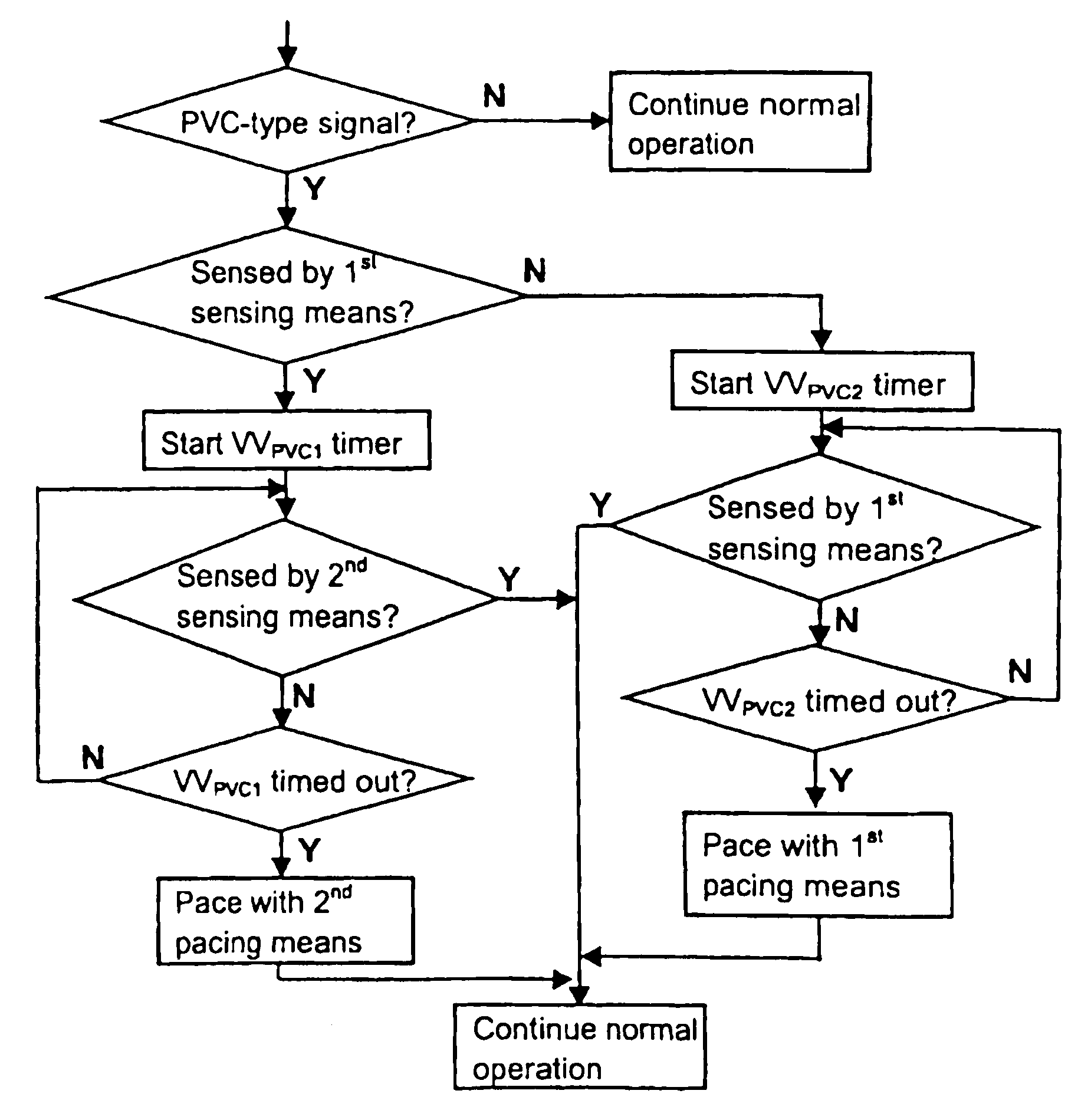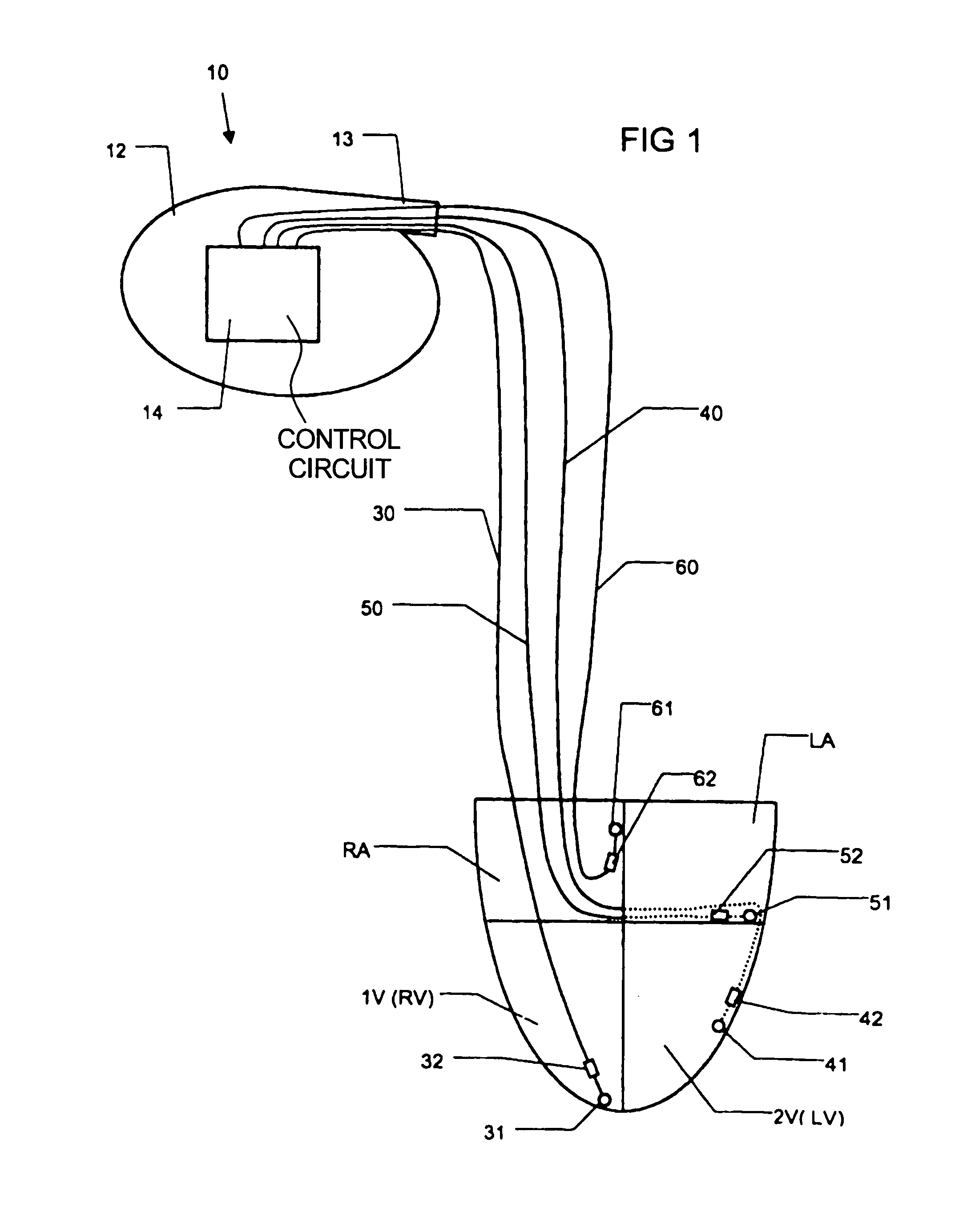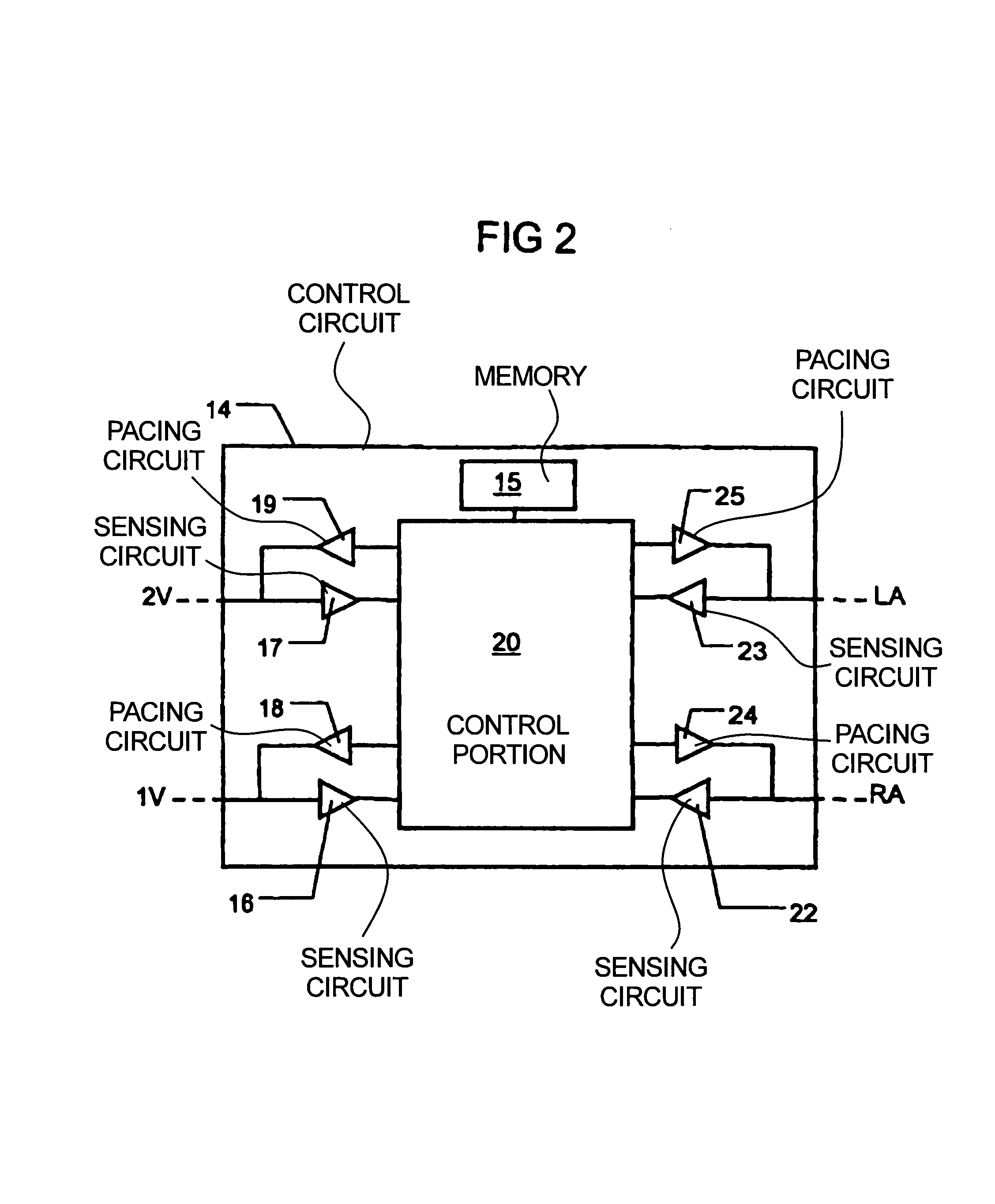Implantable heart stimulating device, system and method
a heart stimulation and implantable technology, applied in electrotherapy, physical therapy, artificial respiration, etc., can solve the problems of ventricular arrhythmia, the best time delay for achieving simultaneous contraction of the ventricles may not be the same as the optimal time delay, etc., to reduce the risk of ventricular arrhythmia, reduce the risk of arrhythmia, and reduce the risk of such an arrhythmia
- Summary
- Abstract
- Description
- Claims
- Application Information
AI Technical Summary
Benefits of technology
Problems solved by technology
Method used
Image
Examples
Embodiment Construction
[0036]FIG. 1 schematically shows an implantable heart-stimulating device 10 according to the invention. The device 10 has a housing 12. The device 10 contains a control circuit 14 (that will be described more in connection with FIG. 2). The device 10 has a connector portion 13. The device 10 is in the illustrated embodiment connected to different leads 30, 40, 50, 60.
[0037]FIG. 1 also schematically shows a heart having a right atrium RA, a left atrium LA, a right ventricle RV and a left ventricle LV.
[0038]A first lead 30 includes electrode members 31, 32 positioned in the right ventricle RV of the heart. The electrode member 31 may be called a tip electrode and the electrode member 32 can be called a ring electrode. In this example, the first lead 30 thus includes a bipolar electrode. However, it is within the scope of the invention that the device 10 instead is connected to unipolar electrodes as is known to those skilled in the art. The electrode formed by the electrode members 31...
PUM
 Login to View More
Login to View More Abstract
Description
Claims
Application Information
 Login to View More
Login to View More - R&D
- Intellectual Property
- Life Sciences
- Materials
- Tech Scout
- Unparalleled Data Quality
- Higher Quality Content
- 60% Fewer Hallucinations
Browse by: Latest US Patents, China's latest patents, Technical Efficacy Thesaurus, Application Domain, Technology Topic, Popular Technical Reports.
© 2025 PatSnap. All rights reserved.Legal|Privacy policy|Modern Slavery Act Transparency Statement|Sitemap|About US| Contact US: help@patsnap.com



